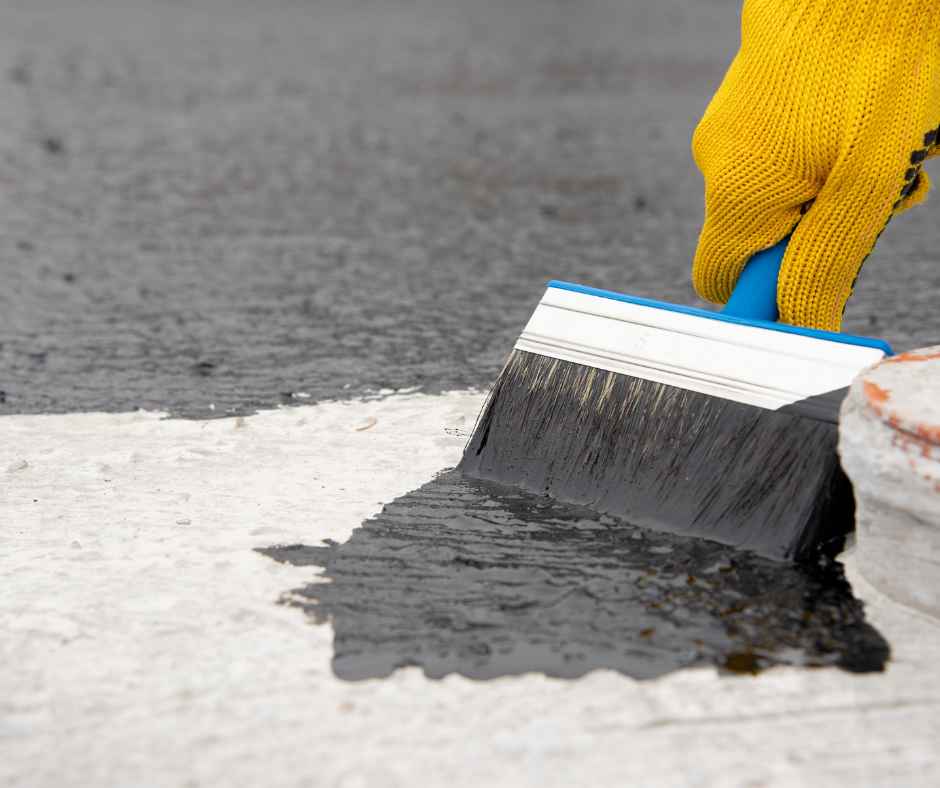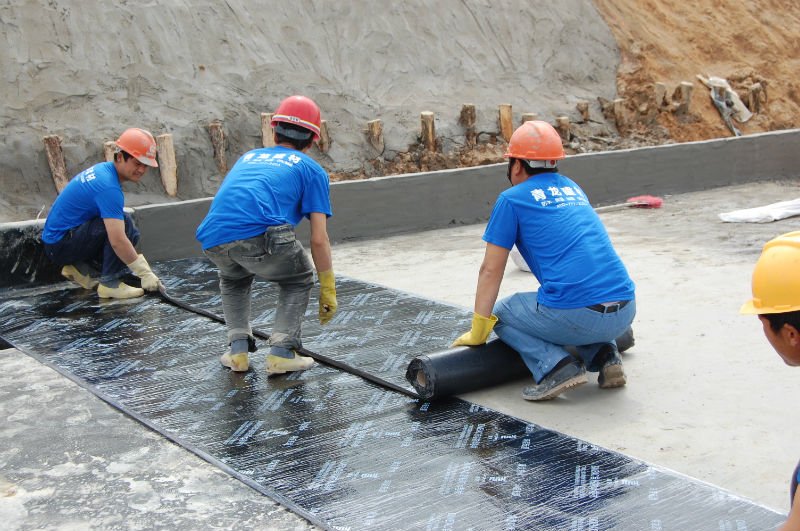Drainage & waterproofing company Omaha: How to Choose the Right One
Wiki Article
How Waterproofing Works: A Detailed Look at Methods and Technologies
Waterproofing is vital for safeguarding frameworks from moisture-related damages. It includes various techniques and technologies that create obstacles versus water invasion. Traditional techniques, such as compressed clay, exist side-by-side with modern-day innovations like liquid-applied membranes. Recognizing the subtleties of these strategies is important for reliable application. The effectiveness of any kind of waterproofing solution hinges not just on the strategies made use of however likewise on recurring upkeep and examination. What are the essential aspects that affect long-term performance?Recognizing the Fundamentals of Waterproofing
Waterproofing is a necessary process that safeguards structures from water breach, which can lead to substantial damage in time. This approach entails the application of various materials and strategies created to produce a barrier versus moisture. The main objective is to avoid water from passing through surface areas, which can trigger wear and tear, mold growth, and structural instability.Various factors affect the option of waterproofing approach, including the type of structure, its place, and environmental conditions. Understanding the physics of water activity and the residential or commercial properties of different products is vital in choosing a reliable waterproofing solution.Effective waterproofing not just safeguards structures but likewise boosts their long life and honesty. Generally, it is integrated into the layout phase of building and construction to assure complete defense. As recognition of water-related concerns grows, the relevance of understanding waterproofing principles ends up being increasingly clear to architects, builders, and property owners alike.Standard Waterproofing Techniques
Traditional waterproofing approaches have actually been utilized for centuries, depending on reliable methods and products to secure structures from water damage. Among the earliest methods includes using clay, which, when compressed, creates an all-natural barrier against moisture. Additionally, bitumen, a sticky, black product originated from oil, has actually been employed for its water-resistant buildings, commonly put on roofs and foundations.Another method involves the application of lime-based plasters, which offer a breathable layer that permits dampness to run away while protecting against water access. Thatch roof covering, a typical approach still seen in some societies, supplies outstanding waterproofing as a result of its securely loaded straw layers.Moreover, using rock and block has been popular, as these products are naturally immune to water when appropriately mounted. Overall, traditional waterproofing methods emphasize the relevance of picking appropriate products and construction methods to boost longevity versus water breach.Modern Waterproofing Technologies
Advancements in contemporary waterproofing innovations have reinvented the way structures are shielded from water damage. Innovative methods such as liquid-applied membrane layers and innovative sealants have actually enhanced the performance and flexibility of waterproofing remedies. These innovations enable for seamless application, reducing the danger of leakages and making sure thorough coverage over complicated surfaces.Moreover, the combination of smart technologies, such as wetness sensors and automated tracking systems, enables real-time evaluation of waterproofing efficiency. This proactive strategy helps with prompt maintenance and decreases long-lasting repair service costs.Additionally, advancements in spray-applied coverings use fast application and outstanding bond, adapting to different substratums while giving robust defense. Techniques like polymer-modified systems further improve adaptability and resilience, making them appropriate for diverse environments. In general, modern-day waterproofing modern technologies not only minimize water intrusion however likewise contribute to the longevity and sustainability of structures, noting a considerable change in the market.Materials Used in Waterproofing
The effectiveness of waterproofing services heavily depends on the materials made use of in their application. Numerous products are employed to create barriers versus water ingress, each with distinct properties matched for different settings. Generally made use of materials consist of membrane layers, layers, and sealants.Liquid-applied membrane layers, typically made from polyurethane or acrylic, form a smooth barrier that adjusts to complex surface areas. Sheet membranes, typically created from rubber or thermoplastic, deal durability and are ideal for larger locations. In addition, cementitious waterproofing materials, made up of cementitious substances, supply excellent bond and flexibility.Sealants made from silicone or polyurethane are vital for joints and seams, making certain thorough defense. Advanced products, such as geo-composite membranes, combine numerous functions, enhancing efficiency. In general, the choice of waterproofing materials is essential in accomplishing durable and effective water resistance, customized to particular job requirements and environmental conditions.
Typical Applications of Waterproofing
Waterproofing plays an important role in numerous fields, making certain the durability and stability of aquadefense frameworks. Common applications include domestic services that secure homes, business framework that safeguards companies, and industrial setups that call for durable defense versus wetness. Comprehending these applications highlights the importance of waterproofing in preserving both security and capability throughout various atmospheres.Residential Waterproofing Solutions
Many homeowners face challenges with moisture breach, making reliable residential waterproofing services vital. Various methods exist to resolve this concern, consisting of exterior and interior waterproofing systems. Inside options usually entail the application of sealants and finishings to basement wall surfaces, which assist avoid water seepage. Outside approaches normally include the installation of water drainage systems and water resistant membranes that draw away water away from the foundation.Additionally, property owners might think about sump pumps to remove water accumulation and dehumidifiers to control moisture levels. Correct grading and using gutters additionally play a crucial duty in managing water flow around the home. By executing these techniques, homeowners can considerably minimize the risk of water damages and mold development, guaranteeing a completely dry and secure living setting.
Commercial Infrastructure Protection
Reliable waterproofing options play an important role in the security of commercial framework. Sump pump discharge drainage Omaha. These techniques are essential for securing buildings, auto parking frameworks, and bridges from water damages, which can compromise structural honesty and result in pricey repair work. Typical applications include the setup of membrane layers, finishings, and sealers that create barriers against dampness infiltration. Areas such as cellars, roof coverings, and exterior walls are often prioritized to assure longevity and toughness. Additionally, waterproofing systems can enhance energy performance by preventing water-related problems that might bring about mold and mildew growth and wear and tear. By applying durable waterproofing measures, building proprietors can protect their investments and keep functional efficiency, ultimately adding to the general sustainability of industrial facilitiesIndustrial Applications Review
While different markets deal with unique difficulties, the need for reliable waterproofing solutions remains a constant in industrial applications. Industries such as production, construction, and power often run into environments where moisture direct exposure can endanger structural integrity and operational effectiveness. In manufacturing facilities, waterproofing is crucial for shielding equipment and materials from water damage. In construction, it safeguards foundations and cellars against groundwater infiltration. The energy market depends on waterproofing for the security of tools in hydroelectric plants and offshore frameworks. Furthermore, food handling industries use waterproofing to assure hygiene and compliance with safety and security criteria. Generally, reliable waterproofing solutions are necessary for enhancing longevity, safety and security, and productivity across numerous industrial setups.
Upkeep and Long Life of Waterproofing Solutions
Waterproofing services are created to use lasting security versus Full Article dampness intrusion, normal upkeep is vital to ensure their performance and longevity. Routine inspections play a significant role in recognizing potential issues such roof deck waterproofing as cracks, peeling off, or indications of water damage. Addressing these troubles without delay can prevent more degeneration and expensive repairs.Additionally, cleaning up the surface of waterproof locations helps remove dust and debris that could jeopardize the honesty of the waterproofing obstacle. It's likewise a good idea to reapply protective finishings or sealants as suggested by producers to maintain excellent performance. Environmental variables, such as UV direct exposure and extreme climate condition, can affect the lifespan of waterproofing products, making routine assessment crucialFrequently Asked Inquiries
Can Waterproofing Be Applied in Cold Weather Condition?
The concern of using waterproofing in chilly climate increases concerns regarding attachment and treating. Several items might not perform at their finest in reduced temperature levels, requiring mindful selection and factor to consider of details guidelines for efficient application.The Length Of Time Does Waterproofing Normally Last?
The period of waterproofing effectiveness varies based upon products and environmental variables. Generally, it can last from five to 10 years, yet normal maintenance and assessments are crucial to assure peak performance and long life.Is Do It Yourself Waterproofing Effective and Safe?
The efficiency and security of do it yourself waterproofing depend upon numerous factors, including material quality and application technique. While some individuals achieve satisfying results, others may encounter concerns that jeopardize long-lasting security and structural integrity.What Are the Indications of Failing Waterproofing?
Indications of stopping working waterproofing consist of visible water spots, peeling paint, mold growth, mildewy odors, and dampness in walls or ceilings - Sump pump discharge drainage Omaha. These signs suggest compromised barriers, necessitating punctual inspection and possible remediation to avoid further damagesJust how Do I Choose the Right Waterproofing Contractor?

Report this wiki page